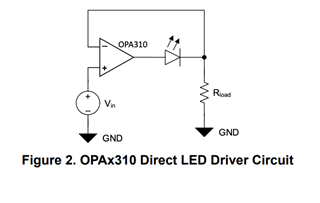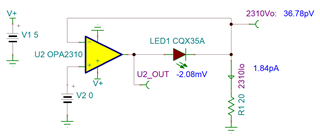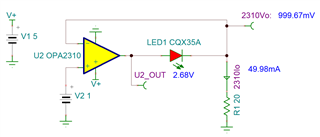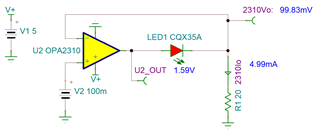Tool/software:
Hello E2E Experts,
Good day.
I am working on a project to modulate an LED with audio from our Laptop computer.
For this project, I am utilizing the OPA310 high-current Op Amp Driver, a crucial component as described in Figure 2 of our article 'Benefits of Op-Amps with High-Current Outputs.' The audio from the Laptop will be the Vin port in Figure 2, serving as the input for the LED modulation.
My understanding is that the audio should have a voltage level between 0 and 1 volt to do this.
What do you think is the best way to accomplish this?
To explain further,





